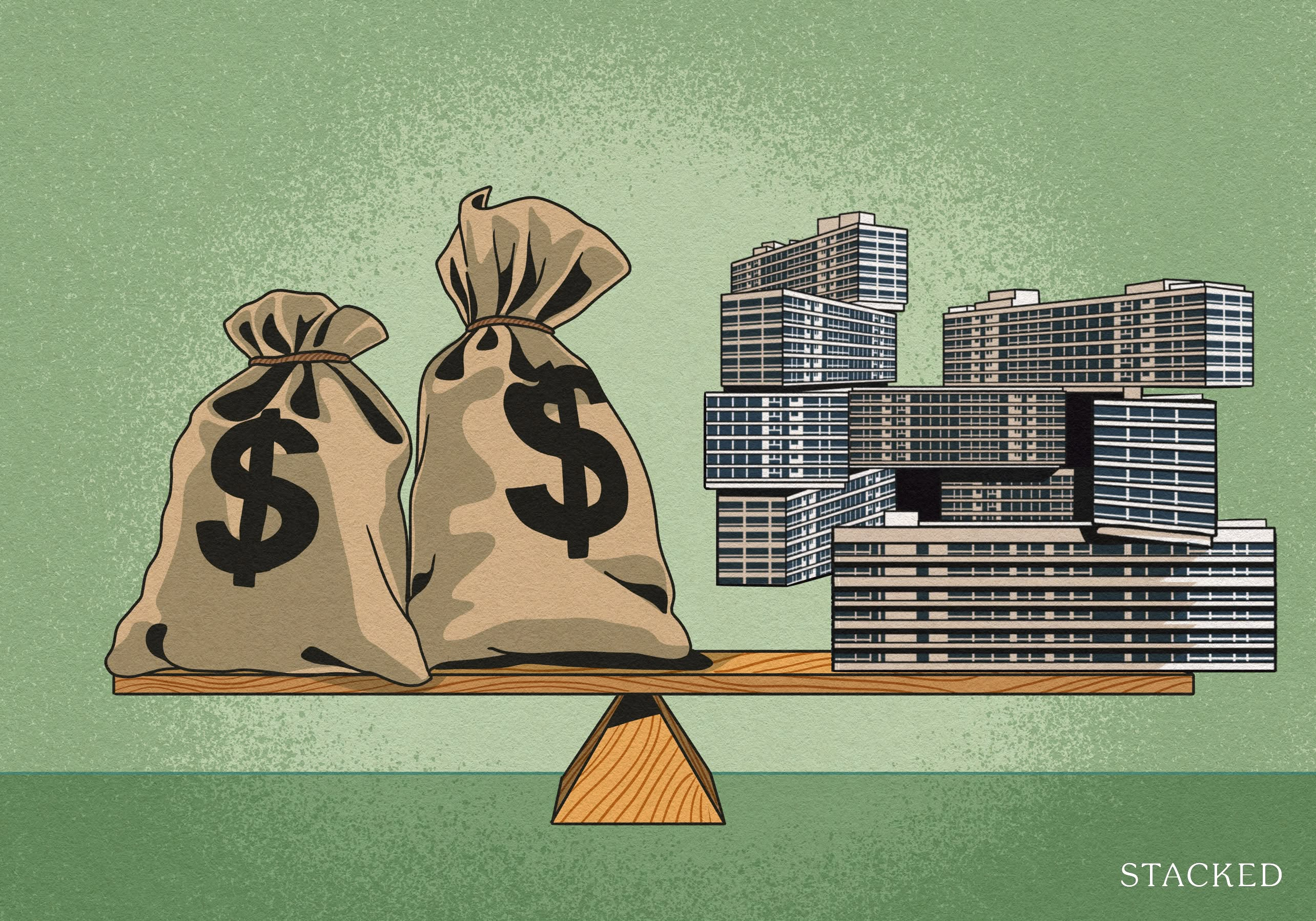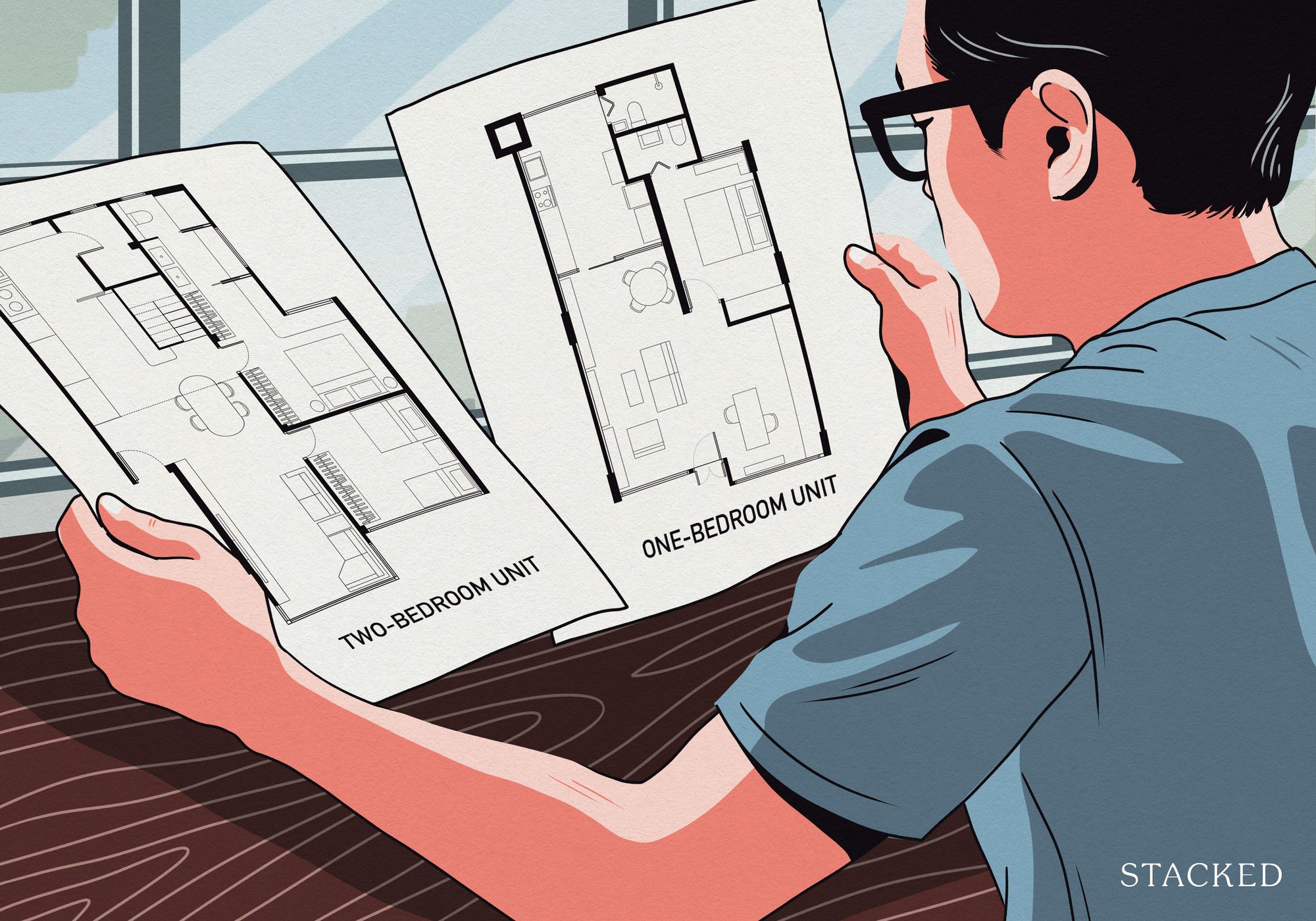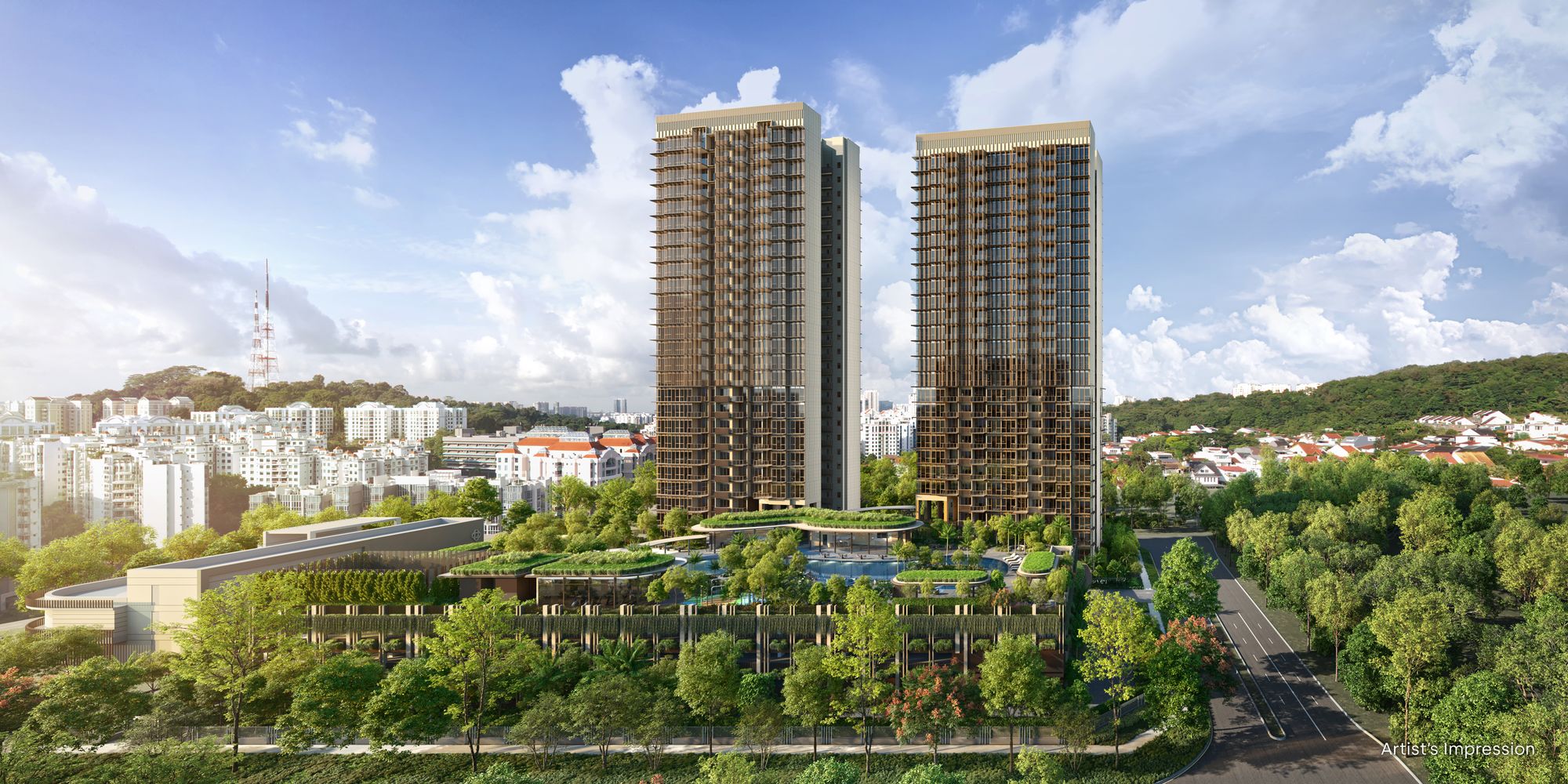How Much Can You Save On Your New Home With Recent Interest Rate Cuts In 2024? We Break It Down

Get The Property Insights Serious Buyers Read First: Join 50,000+ readers who rely on our weekly breakdowns of Singapore’s property market.
A seasoned content strategist with over 17 years in the real estate and financial journalism sectors, Ryan has built a reputation for transforming complex industry jargon into accessible knowledge. With a track record of writing and editing for leading financial platforms and publications, Ryan's expertise has been recognised across various media outlets. His role as a former content editor for 99.co and a co-host for CNA 938's Open House programme underscores his commitment to providing valuable insights into the property market.
We’ve seen significant interest rate cuts among banks, which is good news for homebuyers not using HDB loans. There are also, however, questions about how significant these rate cuts are: if you’re not familiar with home loans, a decrease like a single percentage point might not strike you as meaningful. But there can be a rather significant cumulative effect over time, because of the large sums involved. Here are some examples of how your monthly loan repayments might change:
Note: The following article doesn’t apply to you if you’re using an HDB Concessionary Loan. The HDB loan interest rate is always 0.1 per cent above the prevailing CPF interest rate. This is regardless of current bank interest rates.
How much does a single percentage point matter?
Here, we simulate the difference of a loan package at an annual interest rate of 3.5 per cent, versus 2.5 per cent. This is how much less you could end up paying, based on each property type (and their typical quantum):
| Interest (1st month, 25 year loan tenure) | ||||
| Property Type | Loan Amount | 2.50% | 3.50% | Estimated Difference Per Month |
| 3 Room HDB | $300,000 | $1,346 | $1,502 | -$156 |
| 4 Room HDB | $400,000 | $1,794 | $2,002 | -$208 |
| 5 Room HDB | $500,000 | $2,243 | $2,503 | -$260 |
| Executive HDB | $600,000 | $2,692 | $3,004 | -$312 |
| 1BR | $700,000 | $3,140 | $3,504 | -$364 |
| $800,000 | $3,589 | $4,005 | -$416 | |
| $900,000 | $4,038 | $4,506 | -$468 | |
| $1,000,000 | $4,486 | $5,006 | -$520 | |
| 2BR | $1,100,000 | $4,935 | $5,507 | -$572 |
| $1,200,000 | $5,383 | $6,007 | -$624 | |
| 3BR | $1,300,000 | $5,832 | $6,508 | -$676 |
| $1,400,000 | $6,281 | $7,009 | -$728 | |
| $1,500,000 | $6,729 | $7,509 | -$780 | |
| $1,600,000 | $7,178 | $8,010 | -$832 | |
| $1,700,000 | $7,626 | $8,511 | -$884 | |
| $1,800,000 | $8,075 | $9,011 | -$936 | |
| 4BR | $1,900,000 | $8,524 | $9,512 | -$988 |
| $2,000,000 | $8,972 | $10,012 | -$1,040 | |
| Terrace | $2,500,000 | $11,215 | $12,516 | -$1,300 |
| $3,000,000 | $13,459 | $15,019 | -$1,560 | |
| $3,500,000 | $15,702 | $17,522 | -$1,820 | |
| Semi-Detached | $4,000,000 | $17,945 | $20,025 | -$2,080 |
| $4,500,000 | $20,188 | $22,528 | -$2,340 | |
| $5,000,000 | $22,431 | $25,031 | -$2,600 | |
| $6,000,000 | $26,917 | $30,037 | -$3,120 | |
| $7,000,000 | $31,403 | $35,044 | -$3,640 | |
| Detached | $8,000,000 | $35,889 | $40,050 | -$4,161 |
| $9,000,000 | $40,376 | $45,056 | -$4,681 | |
| $10,000,000 | $44,862 | $50,062 | -$5,201 | |
Do take the long-term view here. A difference of $208 a month for a 4-room flat may not seem like much; but over an extended period, it can have quite the effect. It’s also important to remember about CPF withdrawal limits.
For a private bank loan, the withdrawal limit is up to 120 per cent of the value of your property. The higher the interest rate, the quicker you’ll hit this withdrawal limit. After that, you’ll need to service the home loan in cash.
So a reduction in interest rates doesn’t just mean your home is cheaper: it also prevents you from hitting the withdrawal limit sooner.
Is it all good news for borrowers and buyers?
There are several factors to be aware of still:
1. The lower rates don’t currently help with loan applications
For those who think falling rates will help with the Total Debt Servicing Ratio (TDSR) or Mortgage Servicing Ratio (MSR), we have some bad news.
MSR and TDSR calculations don’t use the actual interest rates of your loan package. They use a floor rate established by MAS, which is currently four per cent per annum, to estimate your monthly loan repayment. For example:
Say you have a loan quantum of $1.25 million for 25 years, and your actual loan interest rate is 2.5%. Your likely monthly repayment will be about $5,600 per month. Using the four per cent floor rate, however, your estimated monthly repayment would be closer to $6,600 per month. It is this higher $6,600 amount that will be used to calculate your debt servicing ratios.
Unless the floor rate changes, financing won’t be any easier now than it was before.
2. Some types of loan packages won’t benefit from this
The most clear example of this is if you have a fixed-interest rate loan. If you took on a 3.7 per cent fixed rate for the next five years then that’s what you’ll pay, regardless of falling rates.
Likewise, there are bank loans with Internal Board Rates (IBR), where the interest is set by the bank. These types of loans tend to be quick to raise rates, but slow to lower them; so unfortunately you’re at the mercy of the bank. You might get lucky and have your rates lowered, but we wouldn’t count on it.
While you can refinance your way out of these loans, you should consult a mortgage broker first. Quite often, the penalties involved don’t make it worth the cost. To break the lock-in period on a fixed-rate loan, for example, will typically cost you 1.5 per cent of the undisbursed loan amount. For example, if you have $1 million outstanding, it would cost you a penalty of $15,000 just to refinance.
On top of this, refinancing can incur further legal fees (about $2,500 to $3,000), and you’ll need to qualify for a loan all over again. That means presenting your income, qualifying under TDSR*, etc.
*Applicable only if you’re not an owner-occupier of the property.
As much as it hurts, you may have to bear with losing out on lower rates, as the penalties would just make it worse.
3. Longer interest rate periods may limit the benefits
Most loans have an interest-rate period, such as one-month SORA (1M SORA) or three-month SORA (3M SORA). This refers to how often the loan rates are revised to match the market; so a 3M rate, for example, would change every quarter.
In general, a longer interest rate period is bad when loan rates are plunging, and vice versa. On a 3M SORA package, for example, you’ll still be paying the interest rates in January when February and March come around. So if the rate fell in those two months, you won’t benefit from it.
Some banks have repricing (not refinancing) options that let you change this though, and you may have one or two free repricings in your loan package. Check the terms and conditions.
Will this result in a surge of people buying properties?
Lower interest rates do make properties more affordable, and we saw this happen in the 2008/9 Global Financial Crisis. At the time, rock-bottom rates caused a massive surge in private home prices, which only ended around five years later.
However, the current situation in 2024 isn’t exactly comparable. Policy changes like higher ABSD rates and debt servicing ratios present obstacles that weren’t there during the prior surge. Property simply isn’t as accessible as it was in the 2000’s.
The other big factor is the volatile state of the US right now. Our interest rates fall because the US Federal Reserve chooses to cut rates; and right now it’s expected that rates could still fall further. The problem is that the Fed also uses interest rates as a tool to control inflation: right now the rates are falling because inflation is cooling. But the upcoming US government administration is promising policies with a lot of inflationary pressure. Depending on how their central bank responds, it’s uncertain if the lower rates will persist.
So overall the news appears good: the lower rates look like a much-needed reprieve for borrowers, whilst cooling measures and US uncertainty dissuade buying sprees. Hopefully, you have a loan package that lets you enjoy these savings while they last.
At Stacked, we like to look beyond the headlines and surface-level numbers, and focus on how things play out in the real world.
If you’d like to discuss how this applies to your own circumstances, you can reach out for a one-to-one consultation here.
And if you simply have a question or want to share a thought, feel free to write to us at stories@stackedhomes.com — we read every message.
Ryan J. Ong
A seasoned content strategist with over 17 years in the real estate and financial journalism sectors, Ryan has built a reputation for transforming complex industry jargon into accessible knowledge. With a track record of writing and editing for leading financial platforms and publications, Ryan's expertise has been recognised across various media outlets. His role as a former content editor for 99.co and a co-host for CNA 938's Open House programme underscores his commitment to providing valuable insights into the property market.Read next from Property Advice

Property Advice We’re In Our 50s And Own An Ageing Leasehold Condo And HDB Flat: Is Keeping Both A Mistake?

Property Advice Should We Buy An Old 99-Year Leasehold Condo To Live In: Will It’s Value Fall When The Lease Runs Out?

Property Advice We Own A $800K 1-Bedder And A $1.1M 3-Bedder: Is It Possible To Upgrade To A 4-Bedder Condo?

Property Advice I Own A 55-Year-Old HDB Flat, But May Have To Sell — Can I Realistically Buy A Freehold Condo With $700K?
Latest Posts

Pro How A 625-Unit Heartland Condo Launched In 2006 Became One Of 2025’s Top Performers

Property Investment Insights Does Buying A One-Bedroom Condo Still Make Sense As An Investment In 2026

Property Market Commentary Why This Once-Ulu Town In Singapore Is Going To Change (In A Big Way)

Editor's Pick This HDB Just Crossed $1.3M For The First Time — In An Unexpected Area

Singapore Property News “I Never Thought I’d Be Sued by a Tenant.” What Long-Time Landlords in Singapore Miss

Editor's Pick I Lived In Bayshore When It Was ‘Ulu’. Here’s How Much It Has Changed

Editor's Pick HDB Resale Prices Finally Slowed in 2025 — Will It Continue in 2026?

Singapore Property News Breaking News: District 23 Condo Sells Out In Under Two Years At $2,120 Psf Average

On The Market Here Are The Cheapest 3-Bedroom Condos in Central Singapore You Can Still Buy From $1.15M

Property Market Commentary Why The Singapore Property Market Will Be Different In 2026 — And It’s Not Just About Prices

Editor's Pick 2025 Year-End Review Of The Singapore Property Market: What The Numbers Reveal

Pro This 21-Year-Old Condo Didn’t Sell Out Initially, Yet Became A Top Performer

Editor's Pick How The HDB Resale Market Performed In 2025, And What It Means For 2026 Prices

Editor's Pick 4 Key Trends Reshaping Singapore’s New Launch Condo Market In 2026

Editor's Pick What I Only Learned After My First Year Of Homeownership In Singapore



TSDR does not apply for refinancing if you are an owner-occupier. This is based on MAS website.
https://www.mas.gov.sg/regulation/explainers/tdsr-for-property-loans/who-tdsr-applies-to